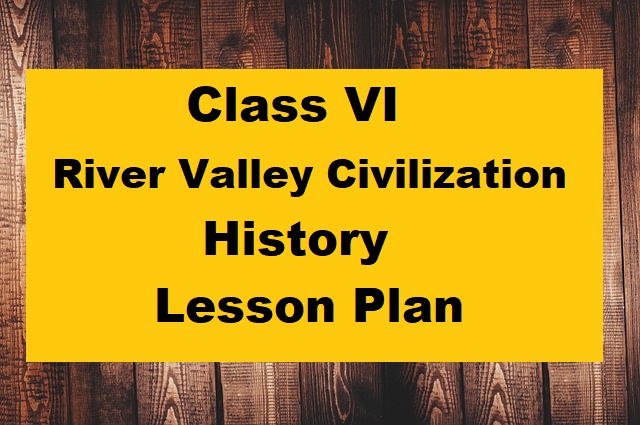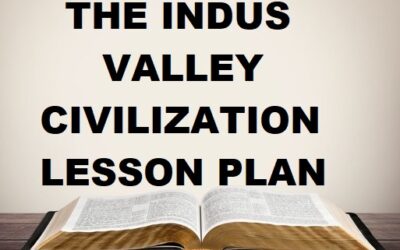River Valley Civilizations: History Lesson Plan with Activities
River valley civilizations are the starting point of organized human society, and they give us interesting glimpses into the evolution of culture and advancement. To learn more about them, we transition from basic settlements to advanced cities, and in the process, we notice how rivers influenced all aspects of life. Further, river valley civilizations also teach us how agriculture, commerce, and innovations prospered when individuals cooperated in fertile areas. Further, by conducting an active participation in classroom activities, students actively discover these ancient cultures rather than memorizing information. Thus, this lesson plan focuses on learning by doing, whereby the significance of river valley civilizations is made evident, significant, and memorable.
River Valley Civilizations (Class 6 History, Chapter 1)
General Information
Subject: History
Class: 6
Topic: River Valley Civilizations
Duration: 40 minutes
Teaching Aids:
Map of the world, chart papers, projector (available), flash cards, clay for modelling, worksheets
Learning Objectives
At the end of the lesson, students will be able to:
- Identify the prominent river valley civilisations (Mesopotamia, Egypt, Indus Valley, China).
- Explain why rivers were significant for the development of civilisations.
- Explain the occupations, lifestyle, and contributions of individuals in early civilizations.
- Explain how the significance of rivers in early times relates to their importance today.
Lesson Titles (Teaching Flow)
Introduction
“Where It All Began: Life Along the Rivers”
Exploration
“Mapping the First Civilisations”
Activity Work
“Building a Civilisation Together”
Discussion
“Why Were Rivers So Important?”
Conclusion
“Lessons from the Past: Rivers Still Matter”
Teaching Procedure (With Activities)
Introduction (5 minutes)
Start with an easy question: “Why do you think the earliest people settled near rivers?”
Display a world map indicating the location of Nile, Indus, Tigris-Euphrates, and Huang He rivers.
Briefly describe how these became centers of the world’s first civilizations.
Activity 1 – Map Work (10 minutes)
- Hand out blank world maps.
- Get students to find and identify the four river valley civilisations.
- Name the rivers and civilisations (Mesopotamia – Tigris/Euphrates, Egypt – Nile, Indus Valley – Indus, China – Huang He).
Activity 2 – Group Work: “Build Your Civilisation” (15 minutes)
- Split students into 4 groups (each group will cover one civilisation).
- Supply chart papers, sketch pens, or clay.
- Ask them to create a mini-poster/model with main characteristics of their civilisation:
- Houses and cities
- Methods of farming
- Trade
- Inventions (e.g., wheel, writing, irrigation)
Each group presents for 2 minutes.
Class Discussion (5 minutes)
Teacher leads a discussion: “Why did rivers help people live better lives?”
Link to today’s world: “How do rivers still help us in farming, transport, and daily life?”
Class Work Planned
The teacher instructs the students to find the answers from the text-book and write in their social science notebook
- Name the four large river valley civilizations of the world.
- Why did the earliest civilizations arise along rivers?
- Which river valley civilization is referred to as the “Gift of the Nile”?
- Name any two characteristics of the Indus Valley Civilization.
- How did rivers contribute to trade and transport in ancient times?
- Distinguish between the occupations of individuals in the Indus Valley and Mesopotamian civilizations.
- Describe how the invention of irrigation enhanced agriculture in river valley civilizations.
- “Rivers were the lifelines of early civilizations.” Prove this statement with examples.
- Draw and label a simple map indicating the location of the Nile, Indus, Tigris-Euphrates, and Huang He rivers.
- What are some lessons that modem society can learn from the accomplishments of river valley civilizations?
Homework Worksheet – History Class 6 (ICSE)
Subject: River Valley Civilisations
A. Fill in the blanks (1 mark each)
The ________ river is referred to as the “Gift of Egypt.”
The Indus Valley Civilization is also termed the ________ Civilization.
The Huang He River is also referred to as the ________ River.
The earliest writing system of the world, cuneiform, was originated in ________.
B. Match the following (1 mark each)
Column A Column B
Mesopotamia Indus River
Egypt Yellow River (Huang He)
Indus Valley Tigris-Euphrates
China Nile
C. Answer in one or two sentences (2 marks each)
- Why were rivers crucial for agriculture in ancient civilizations?
- Name two elements of town planning in the Indus Valley Civilization.
- What was the role of trade in the expansion of river valley civilizations?
D. Answer in short (3–4 sentences each, 3 marks each)
- Describe how irrigation was established in Mesopotamia.
- In what ways did religion affect the lives of people in river valley civilizations?
E. Map Work (5 marks)
On a world outline map, mark and label these four rivers: Nile, Indus, Tigris-Euphrates, and Huang He.
F. Creative Question (5 marks)
Suppose you are living in the Indus Valley Civilization. Describe your work, surroundings, and life in a short diary entry.
Remedial Measures
The teacher uses the following methods for the slow learners:
Following are 5 remedial steps to improve slow learners of History (or any other subject):
Apply Simple and Clear Explanations
Divide concepts into simpler, easier-to-grasp smaller parts and restate them with practical examples of daily life.
Activity-Based Learning
Involve students in role-plays, sketching, map work, and practical activities instead of mere reading from textbooks.
Regular Revisions and Drills
Offer brief, frequent practice exercises (such as flashcards, quizzes, oral questions) to reinforce memory and recall.
Peer Learning / Group Work
Match slow learners with average or faster learners so that they learn from observing and discussing in groups.
Individual Attention and Encouragement
Offer them special support, positive reinforcement, and small achievable tasks to boost confidence gradually.
Learning Outcome
Here are 5 Learning Outcomes for the chapter River Valley Civilisations (Class 6 – History, ICSE):
- Students will be able to identify and place the four major river valley civilisations on a map.
- They will be able to describe why rivers were important in the expansion of early human settlements.
- will be able to outline the main characteristics of Mesopotamian, Egyptian, Indus Valley, and Chinese civilizations.
- Students will be in a position to analyze the river valley civilizations’ contributions in fields such as agriculture, trade, writing, and town planning.
- Students will be in a position to correlate the significance of rivers during ancient times to contemporary society and understand their role in supporting life.
Conclusion:
River Valley Civilizations are the cornerstone of ancient human history, and this lesson plan is framed to make learning about them more active and effective for teachers and students. Through activities, discussions, and map work, the plan enables social science teachers to design engaging and student-focused classrooms. It also saves time and ensures teaching concepts in an organized fashion. River Valley Civilizations tend to be difficult for students to visualize, yet by using this plan’s activity-based design, teachers can break down abstract concepts and make history more understandable. The plan also promotes critical thinking, creativity, and cooperation, which are critical skills for comprehensive learning. This lesson plan has been designed to assist teachers in presenting meaningful lessons that extend beyond memorization.
Last but not least, as learning is always enhanced by reflection, I respectfully ask the teachers to provide their constructive feedback on how this River Valley Civilizations plan can be further enhanced.





0 Comments